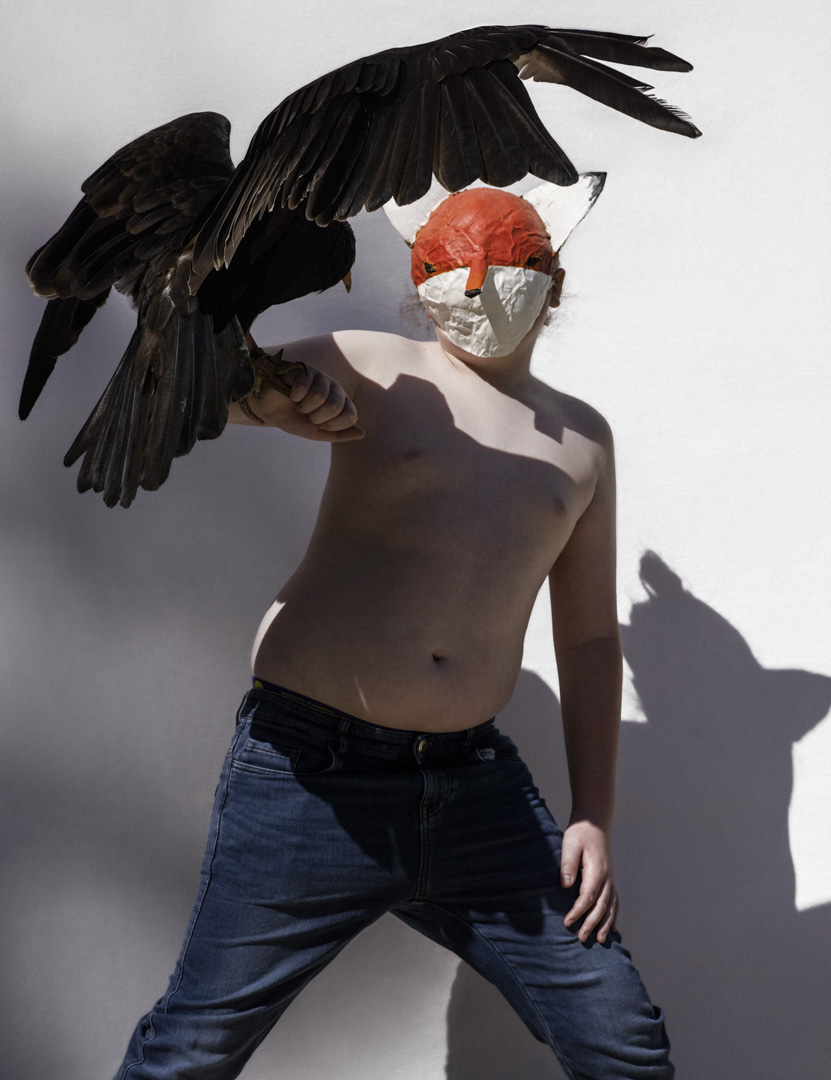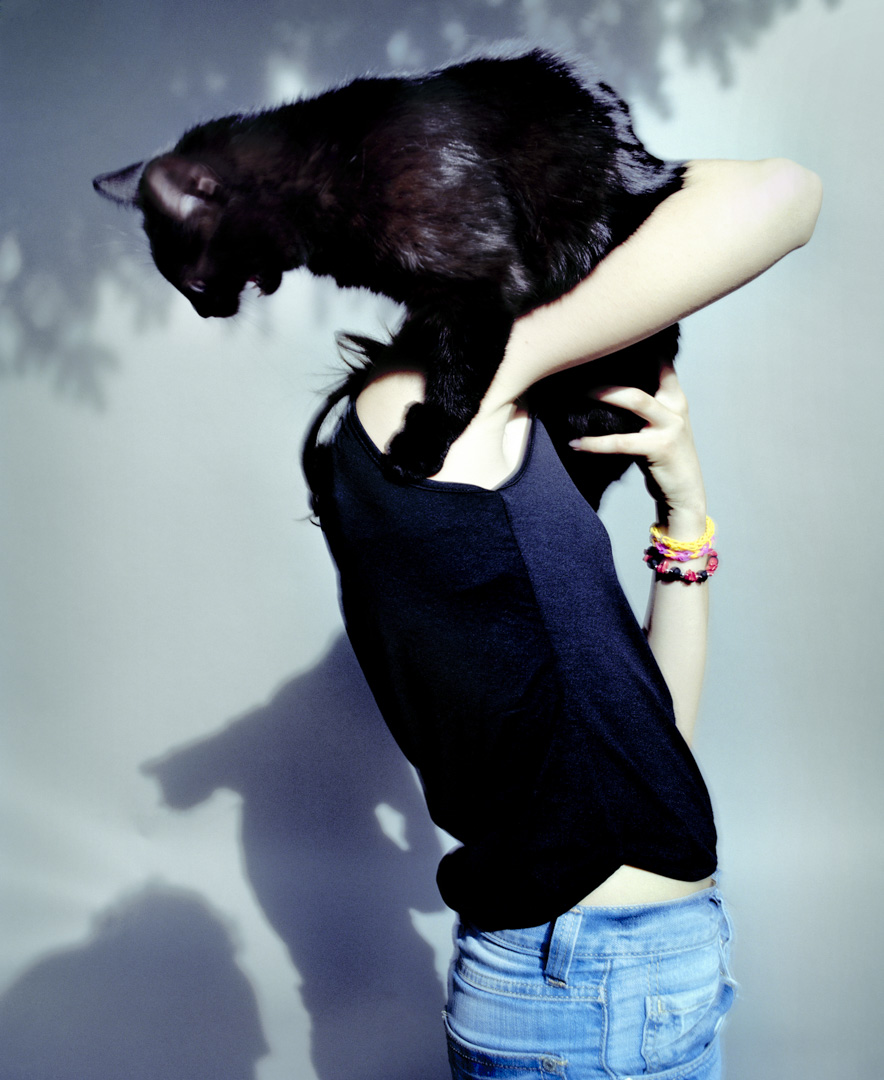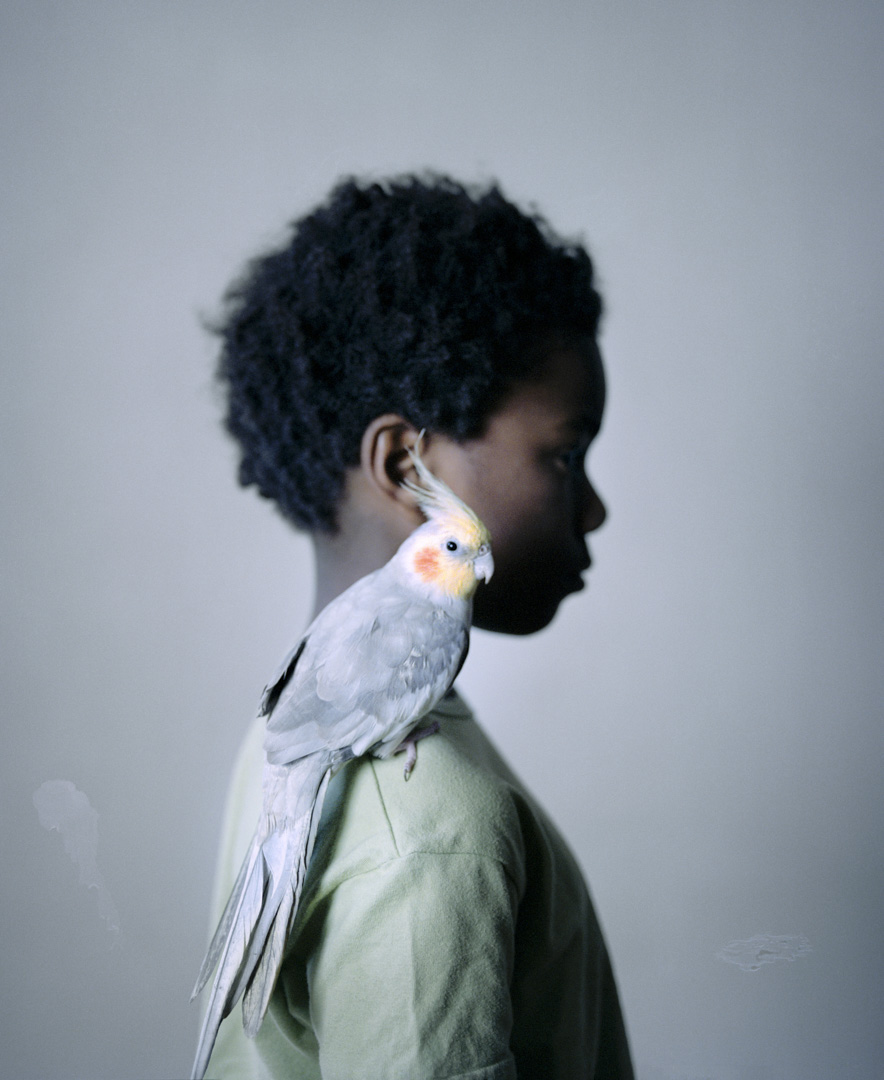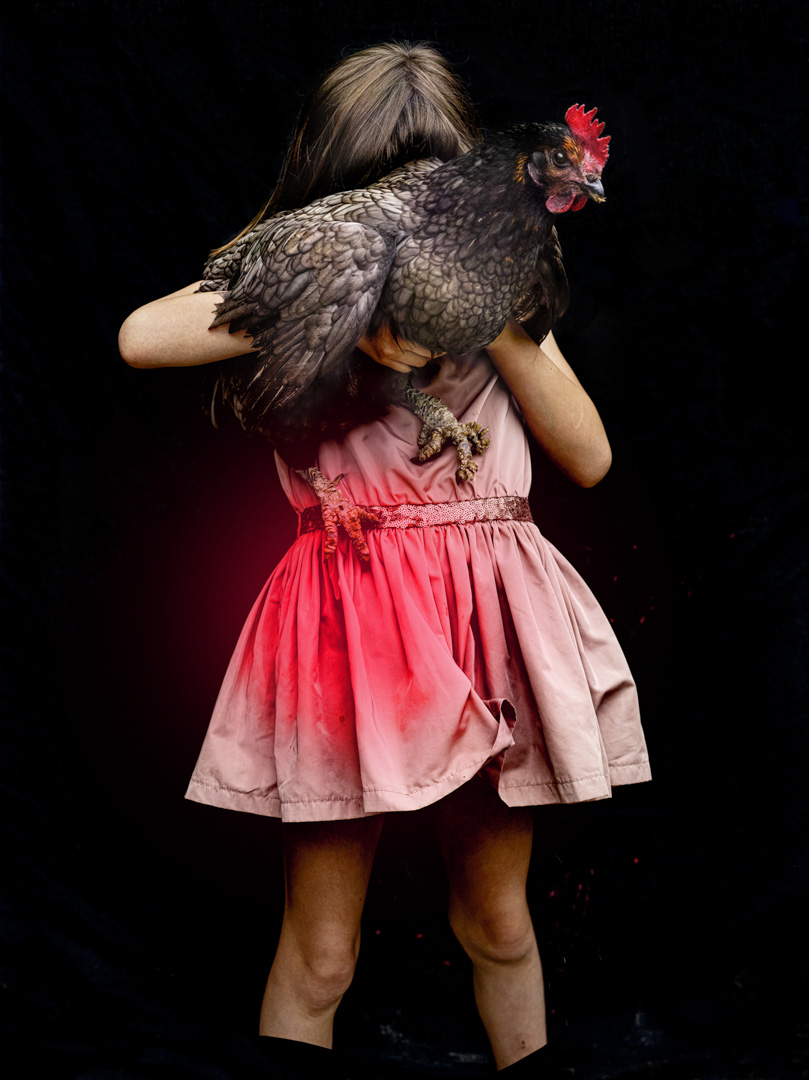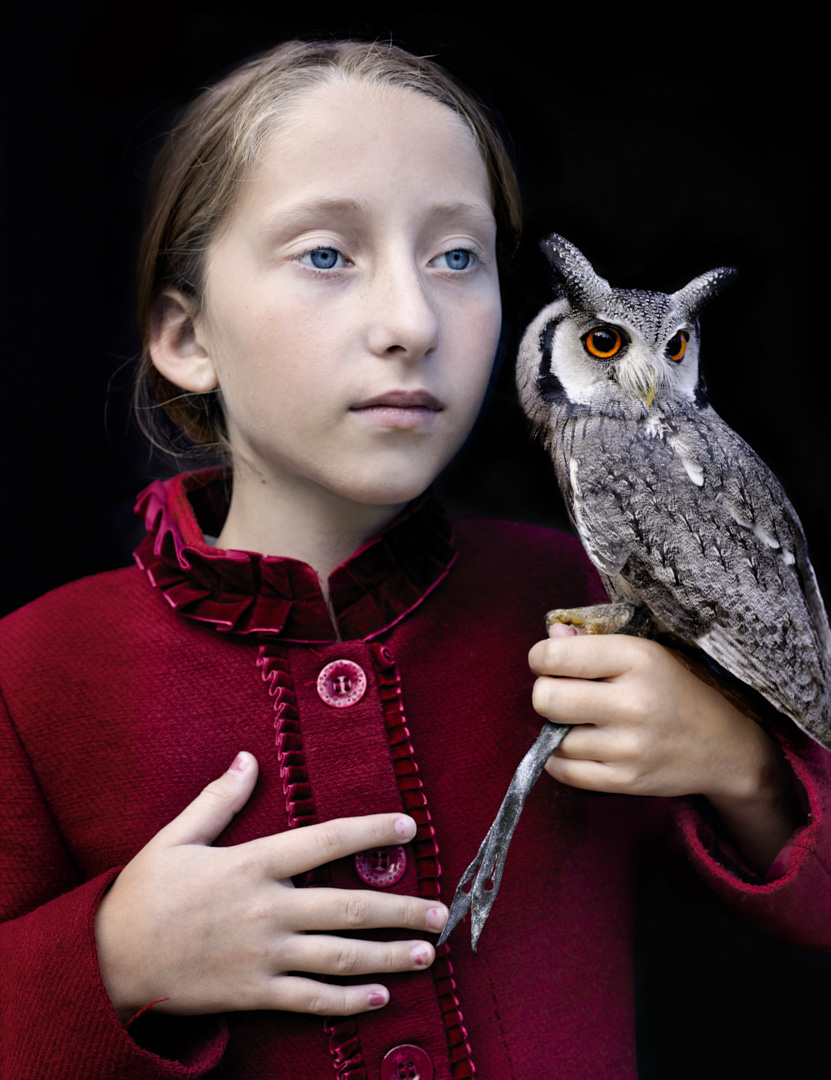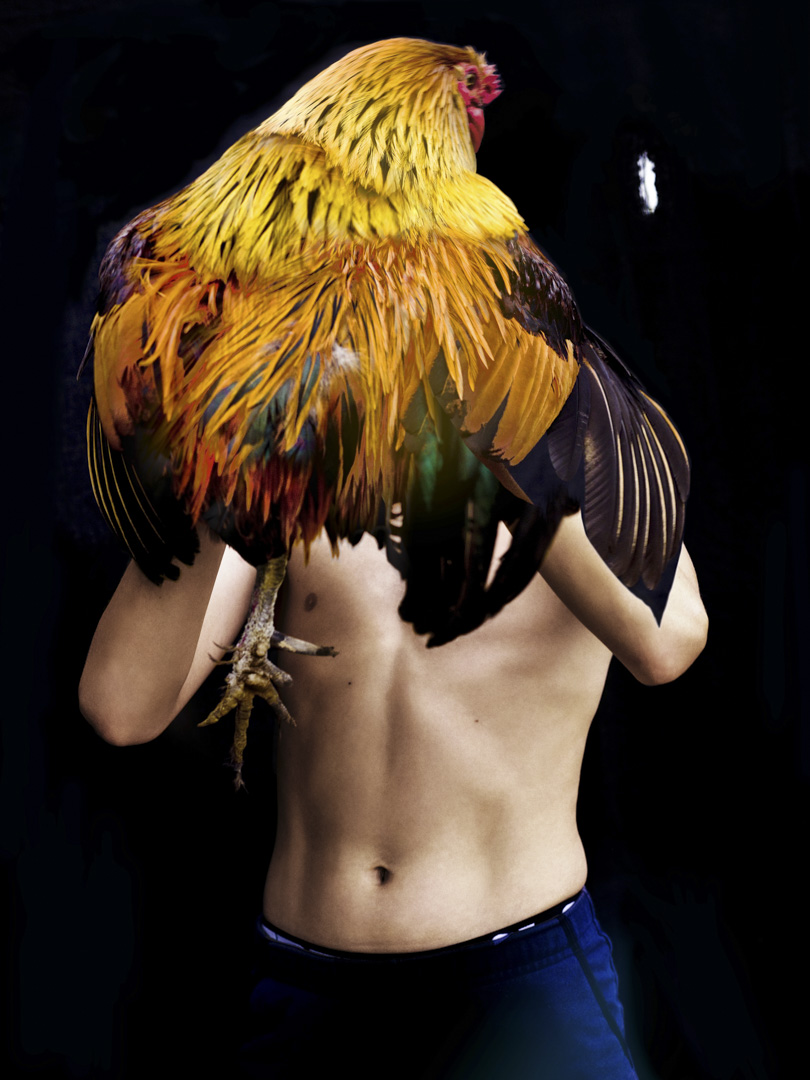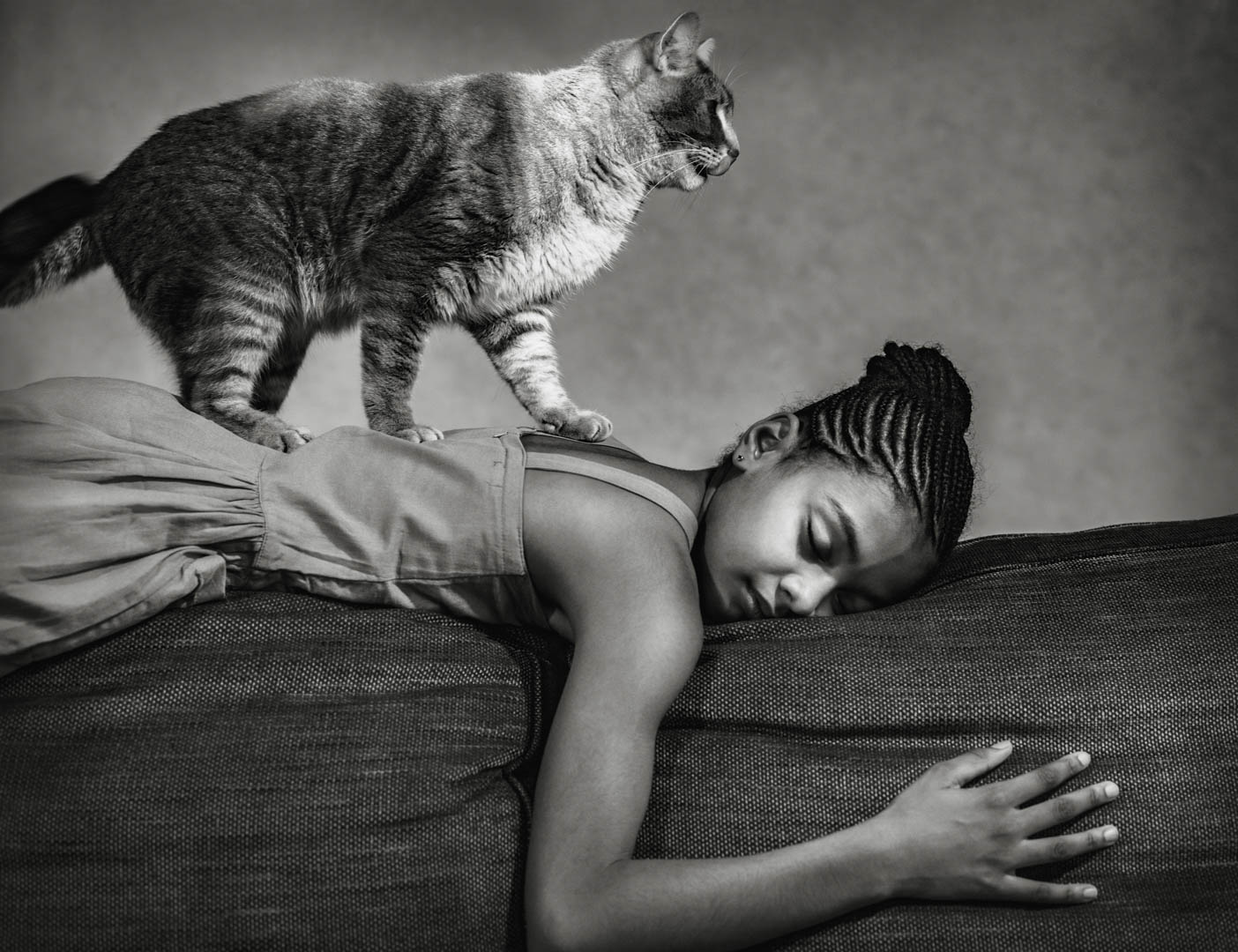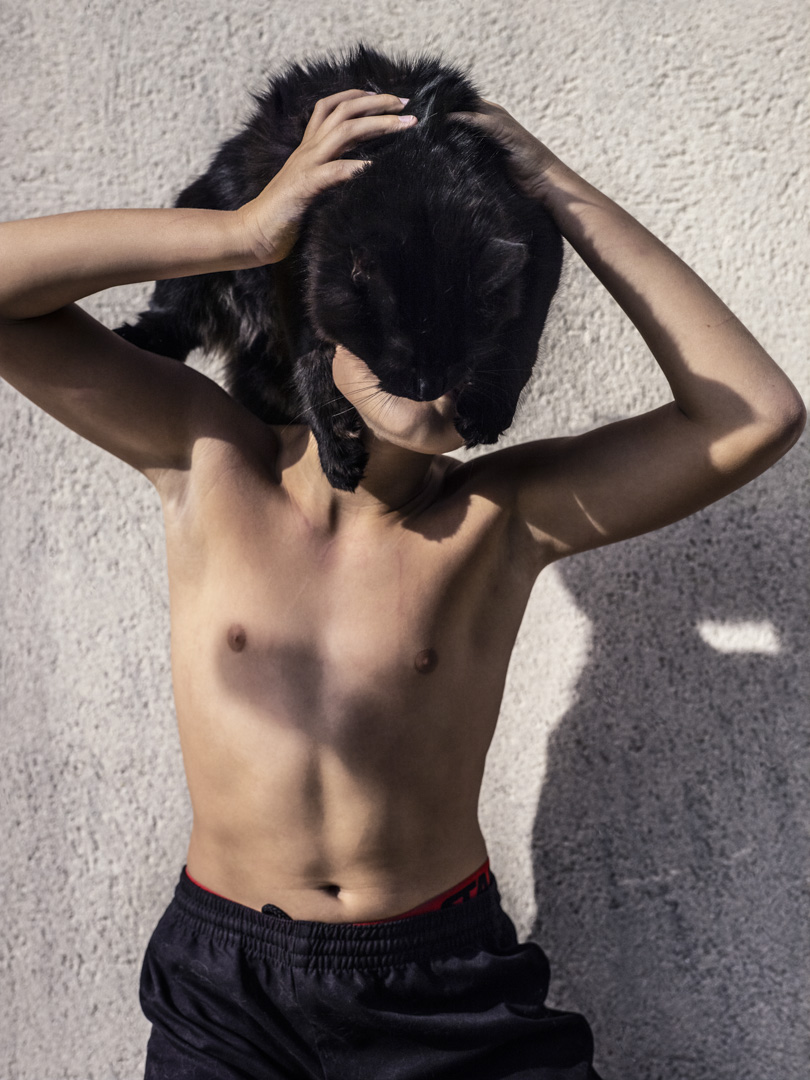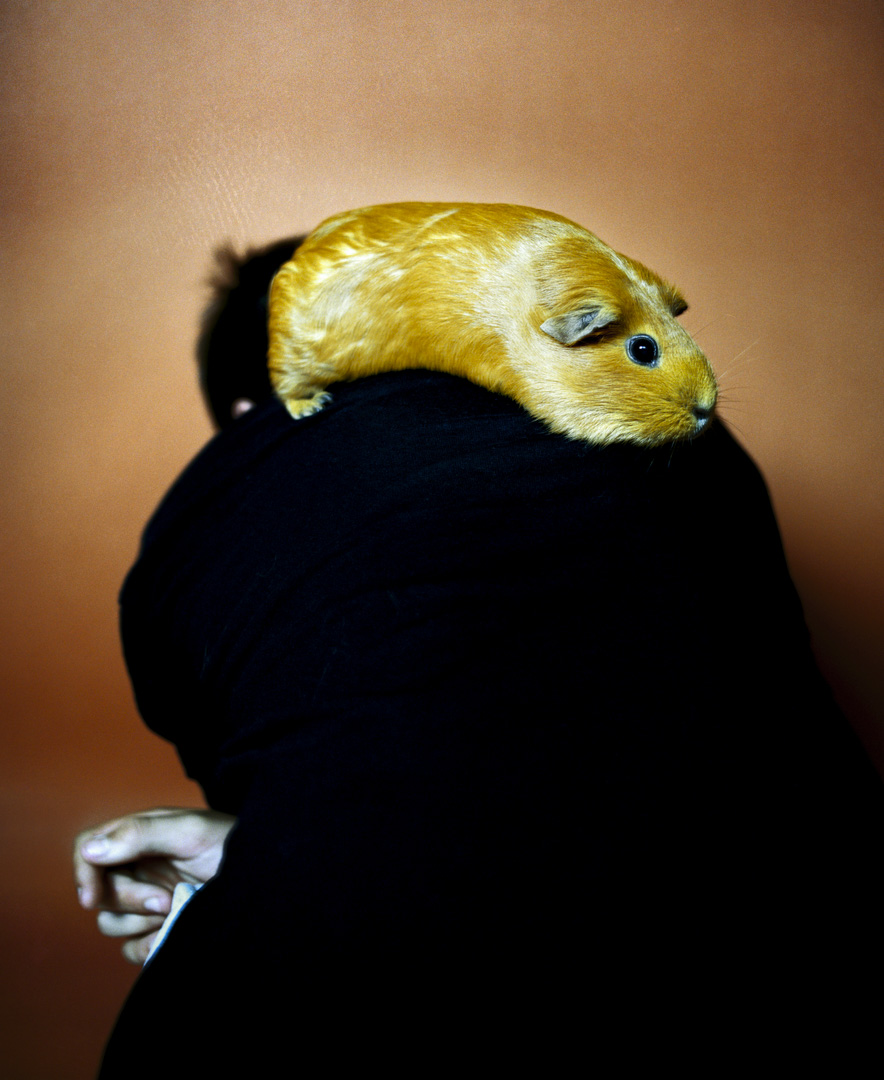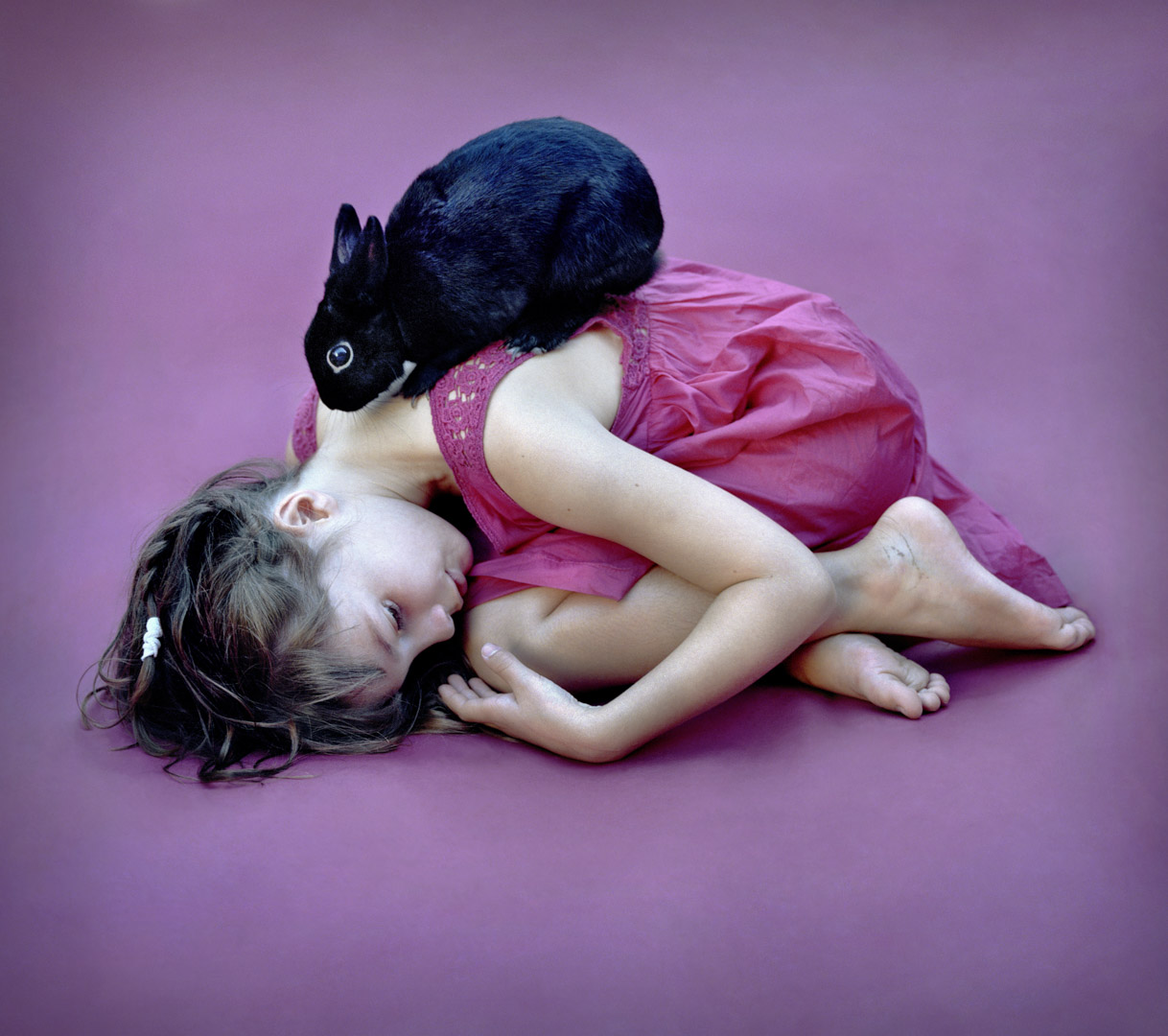Anima, 2014 & 2021
I examine the fusional but sometimes contradictory relationship between a child and his or her pet, seeking to show how privileged yet ambiguous this relationship is. As a source of comfort and communication, in a silent language, the pet occupies a central place in the child’s social development. For the child, the animal can appear as an extension of its own body in an omnipresent movement. The animal assumes the role of ‘transitional object’ in the sense given to it by the British psychiatrist Donald Winnicott. Wildness and domestication are also at issue. There may be an initiation, as in Kipling’s The Jungle Book, revealing the child’s animal side without avoiding confrontations and alliances. Gestures and all forms of non-verbal language then become evocative signs to be captured, like the looks and postures of the body. A kind of timelessness guides the whole.
Tina Merandon





